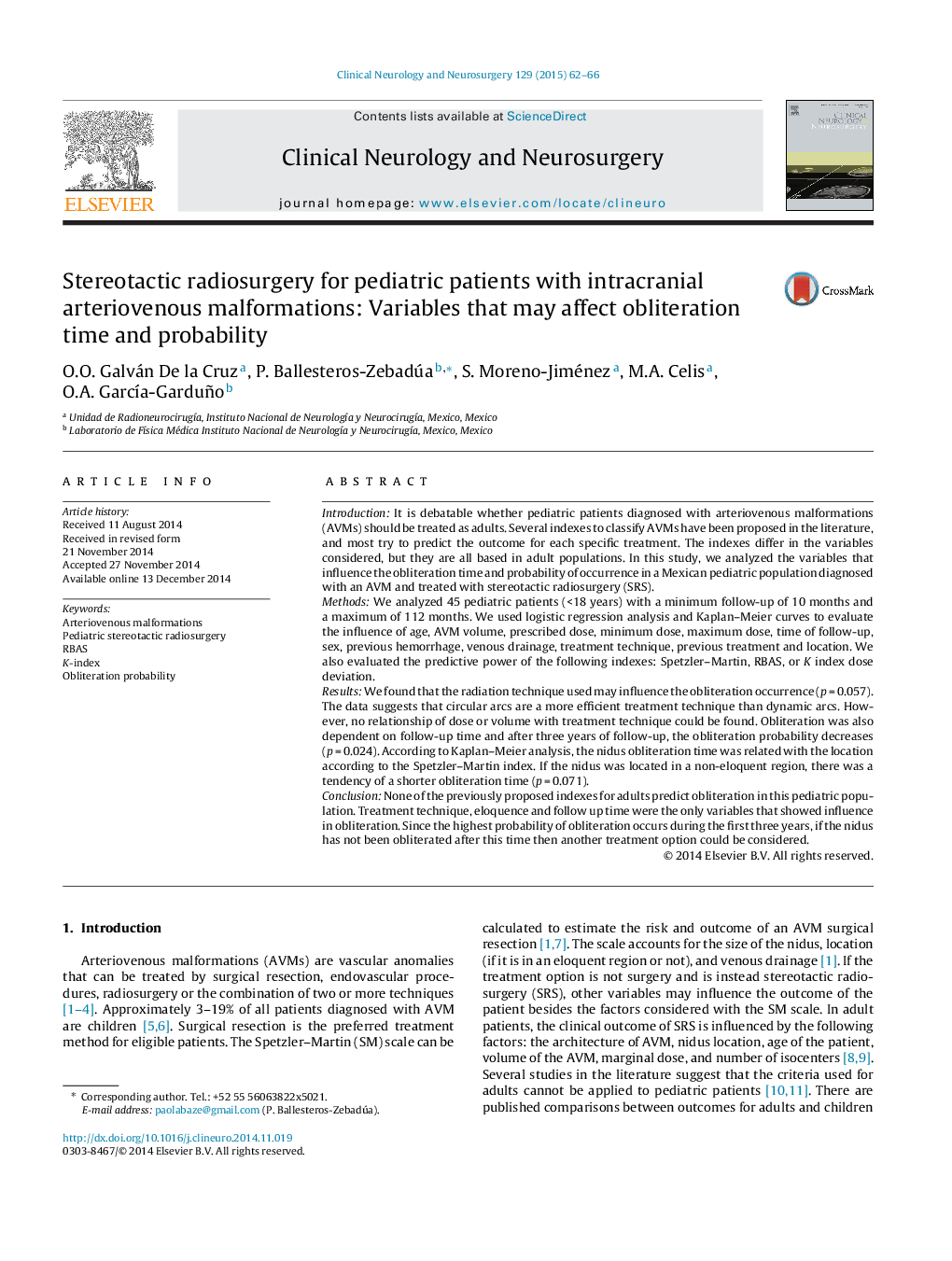| Article ID | Journal | Published Year | Pages | File Type |
|---|---|---|---|---|
| 3039977 | Clinical Neurology and Neurosurgery | 2015 | 5 Pages |
•None of the indexes for adults predict obliteration of AVMs after SRS in children.•The treatment technique used in the SRS procedure can impact obliteration.•After the first three years, the probability of future obliteration is reduced.
IntroductionIt is debatable whether pediatric patients diagnosed with arteriovenous malformations (AVMs) should be treated as adults. Several indexes to classify AVMs have been proposed in the literature, and most try to predict the outcome for each specific treatment. The indexes differ in the variables considered, but they are all based in adult populations. In this study, we analyzed the variables that influence the obliteration time and probability of occurrence in a Mexican pediatric population diagnosed with an AVM and treated with stereotactic radiosurgery (SRS).MethodsWe analyzed 45 pediatric patients (<18 years) with a minimum follow-up of 10 months and a maximum of 112 months. We used logistic regression analysis and Kaplan–Meier curves to evaluate the influence of age, AVM volume, prescribed dose, minimum dose, maximum dose, time of follow-up, sex, previous hemorrhage, venous drainage, treatment technique, previous treatment and location. We also evaluated the predictive power of the following indexes: Spetzler–Martin, RBAS, or K index dose deviation.ResultsWe found that the radiation technique used may influence the obliteration occurrence (p = 0.057). The data suggests that circular arcs are a more efficient treatment technique than dynamic arcs. However, no relationship of dose or volume with treatment technique could be found. Obliteration was also dependent on follow-up time and after three years of follow-up, the obliteration probability decreases (p = 0.024). According to Kaplan–Meier analysis, the nidus obliteration time was related with the location according to the Spetzler–Martin index. If the nidus was located in a non-eloquent region, there was a tendency of a shorter obliteration time (p = 0.071).ConclusionNone of the previously proposed indexes for adults predict obliteration in this pediatric population. Treatment technique, eloquence and follow up time were the only variables that showed influence in obliteration. Since the highest probability of obliteration occurs during the first three years, if the nidus has not been obliterated after this time then another treatment option could be considered.
